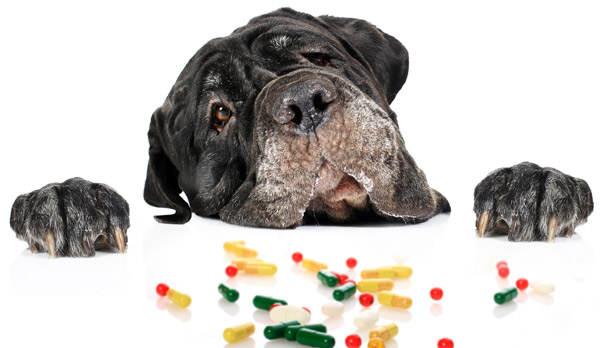PAWS OFF THESE POTENTIAL PET POISONS

I’ve been talking to a lot of clients about the common household items that can be toxic to their pets. According to 2012 data from the Animal Poison Control Center, based in Urbana, Ill., prescription human medication was at the top of the list for the fifth year in a row. The most common meds ingested by dogs and cats include heart medications, antidepressants, and pain medications.
The comprehensive list from the ASPCA website follows:
- Prescription Human Medications – most commonly heart medications, pain medications & antidepressants
- Insecticides – most commonly occurs when cats receive flea/tick preventions & shampoos made specifically for dog use
- Over-the-Counter Human Medications – most commonly over the counter pain medications (naproxen, ibuprofen, and aspirin)
Veterinary Products and Medications - Household Products – soaps, cleaners, batteries, mothballs, glue, antifreeze
- People Food – coffee grounds, xylitol (artificial sweetener often found in gum), grapes, raisins
Chocolate - Plants- Lilies, Marijuana, Sago palm, Tulip, Azalea, Oleander, Castor bean, Cyclamen, Kalanchoe, Yew, Amaryllis, Autumn crocus, Chrysanthemum, English ivy, Peace lily, Pothos, Scheffler
- Rodenticides – most commonly mouse/rat poisons
- Lawn and Garden Products
To help prevent accidental poisonings, keep medicines, household cleaners, pesticides and automotive products stored and out of paw’s reach. Never give any medications or supplements to your pet without first consulting your veterinarian. And always read the label of flea/tick products before applying to your pet. If a product is labeled for dog use only, it can cause serious and often life-threatening side effects in cats.
If you think your pet has ingested a poisonous substance, call your veterinarian or the ASPCA Poison Control Center (1-888-426-4435.) Before you call, make sure you have the following information accessible: name, address, phone, details about exposure, product container, species, breed, age, sex, weight, and be able to describe symptoms your pet is experiencing.
Drew Sullivan, DVM
Veterinarian

